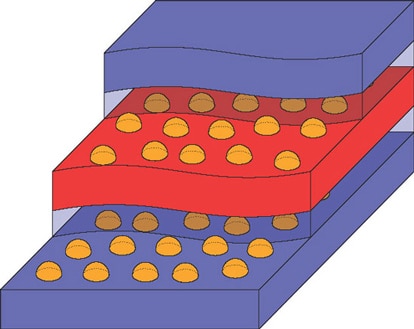Researchers from the University of Rochester in New York have proposed a “new type of nanoscale engine” that recycles heat emitted from a device and uses it to power the same device.

According to Andrew Jordan, a theoretical physics professor at the University of Rochester, the new nanoscale engine would use quantum dots—manufactured systems that act as “artificial atoms” due to their small size—to generate electricity from waste heat.
The proposed nanoengine concept utilizes a pair of adjacent quantum dots with a current “path” flowing through one and then the other. According to Jordan, when the path is adjusted to have an uphill slope, the electrons that need to travel on the path take energy “from the middle of the region, which is kept hot, and use [it] to come out on the other side, higher up the hill,” thereby transferring heat away from where it is being generated.
“The system is really a simple one, which exploits certain properties of quantum dots to harvest heat,” Jordan said. “[However], despite this simplicity, the power it could generate is still larger than any other nanoengine that has been considered until now.”
For more information, visit the University of Rochester.





